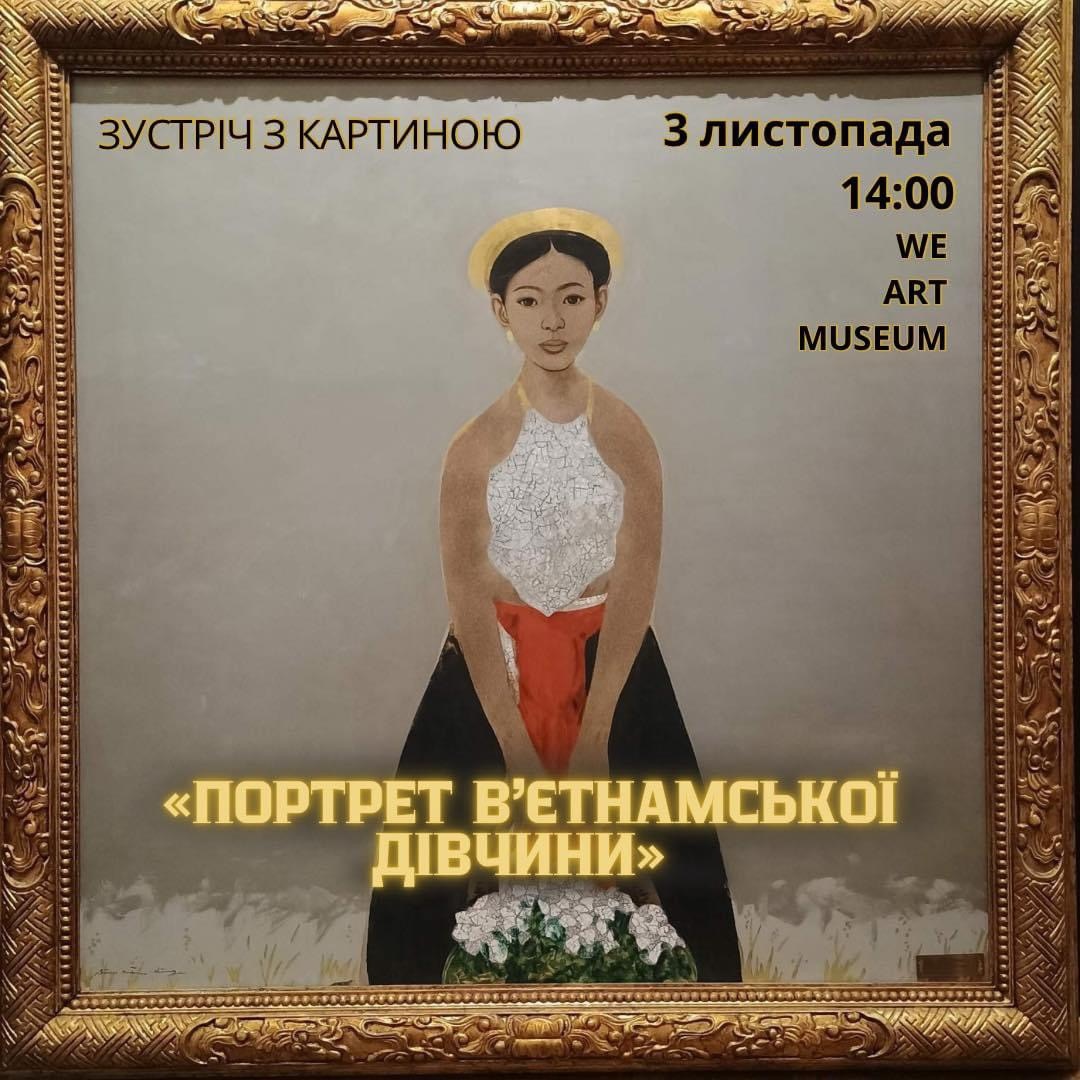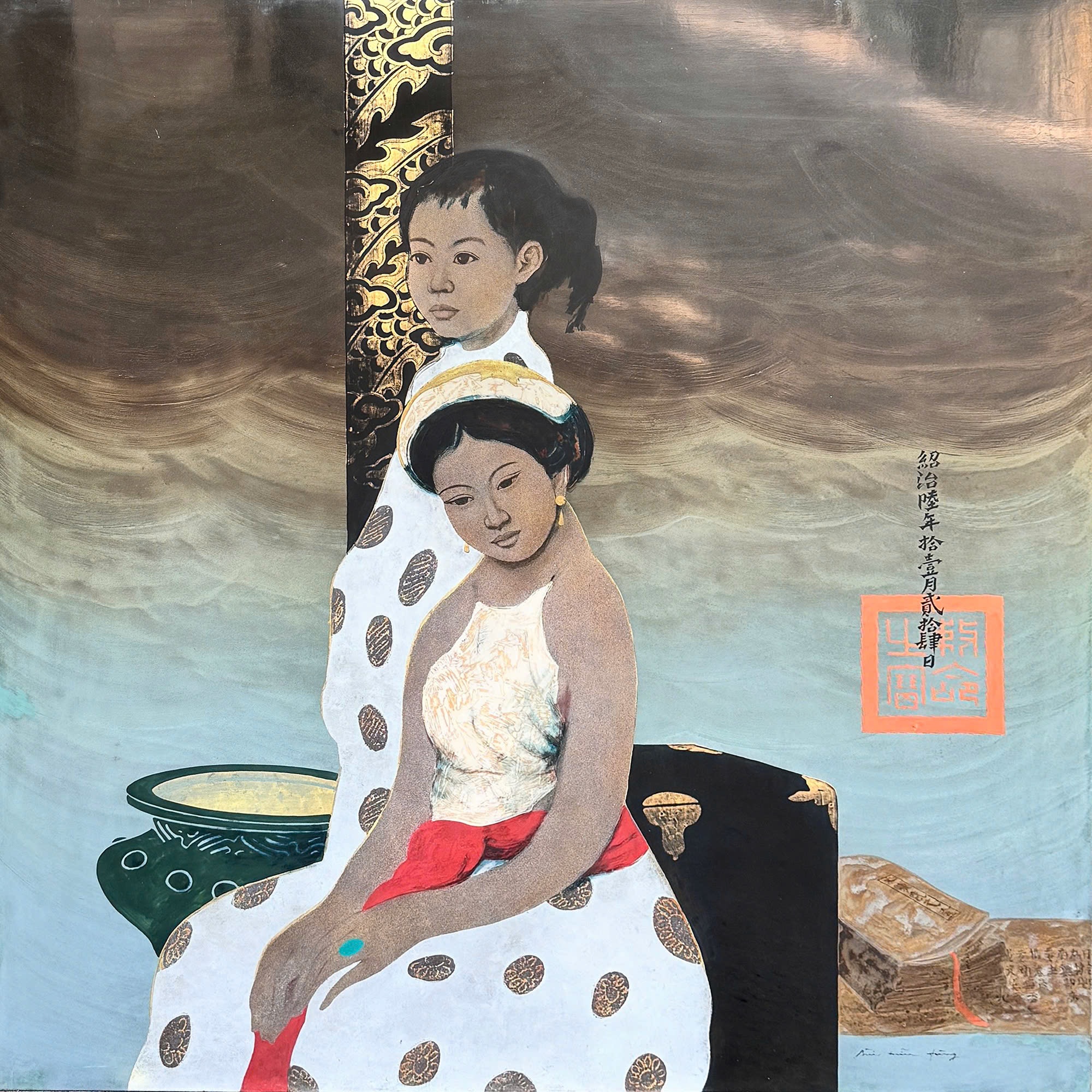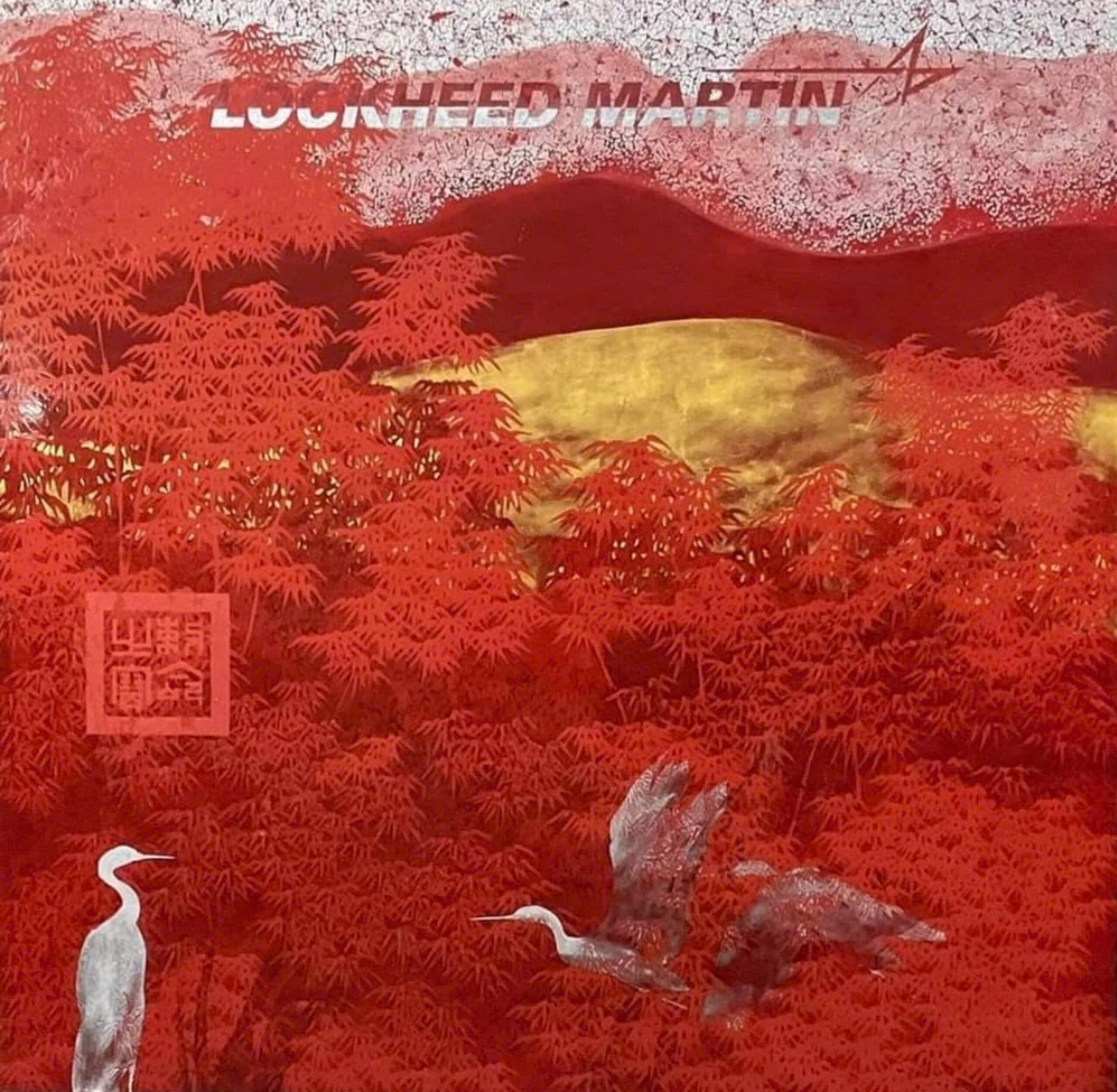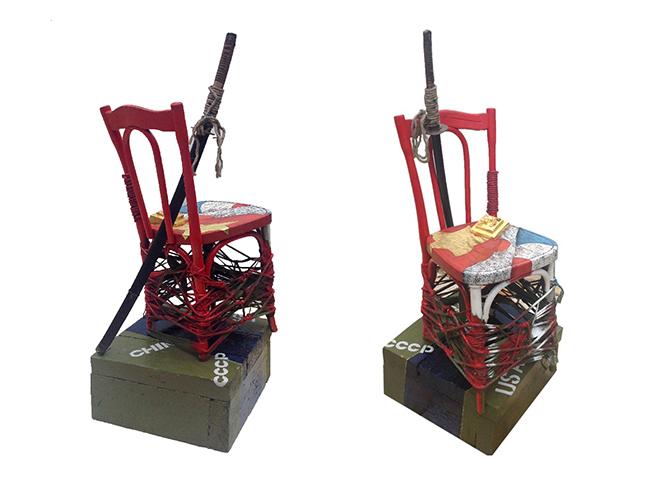This transcription of an oral history is the result of a recorded interview with artist Bui Huu Hung (BHH) on February 1, 2025. The interview was conducted by his daughter, Doai Bui (D). Bui Huu Hung Foundation is pleased to present to art lovers the first part, Brushstrokes of War and Peace: The Art of a Generation.
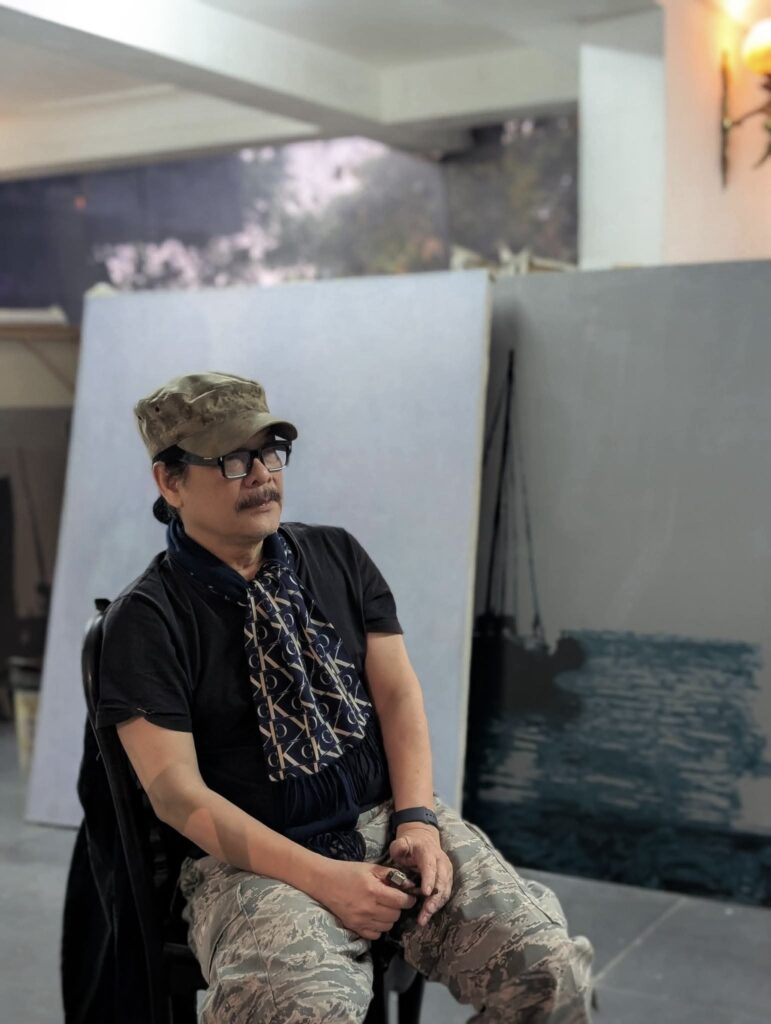
D: Can you introduce yourself and share about your background as an artist?
BHH: As contemporary artists, we’re often grouped into different generations. My generation—well, people are starting to call us the “older” artists now. When I came of age, meaning when I truly started to understand the world, the war was still ongoing. That awareness came around 15 or 16 years old. Back then, in my group, people were considered adults by 17 because that’s when they were drafted into the army. So by 15 or 16, you were already considered mature. And that was also the final stretch of the war—a brutal, intense period from 1972 to 1975 when the fighting was at its peak.
But young people growing up in major cities, especially in Hanoi, formed a distinct generation. They felt pride and a sense of cultural refinement, perhaps due to two key influences: the remnants of old Confucian traditions and the legacy of French colonial culture. As a result, the art world at the time carried an air of sophistication, even a certain calmness amid the war.
Many musicians, writers, and poets existed at that time—mostly those who had been educated under the French system. Unlike others who migrated south, these intellectuals and creatives largely chose to remain in the North. So, even in the midst of war, they formed a kind of intellectual elite. They had their small cafés, gathered over tea, listened to classical music, read literature, and had a deep knowledge of philosophy—especially Western philosophy.
This intellectual circle was further enriched by education from Eastern Europe, East Germany, and the Soviet Union. They had a deep understanding of global music and literature. They appreciated Mozart and Beethoven just as much as they did Tchaikovsky. In literature, they were well-versed in French classics, ancient Chinese literature, and Russian works. Their cultural knowledge was vast.
Despite the hardships, the poverty, and the war, this group maintained a distinct spirit—a refined, intellectual air. They were often referred to as the “elite class” of that time. When I was growing up, I was just beginning to enter that world. I was constantly surrounded by it—listening to classical music from records and reading literature voraciously. We read everything—Resurrection, Les Misérables, La Peau de chagrin, Russian novels. We memorized poetry. We were immersed in culture.
Everyone had their artistic passion. Some loved music, some wrote, and almost everyone dabbled in poetry or painting. But back then, art wasn’t a career—it was just a spiritual pursuit.
There was also another group—artists trained specifically to serve the war effort. They were sometimes called bồi bút—a term that, contrary to what some may think, wasn’t originally meant as an insult. It simply described those who created art with a political purpose.
D: What does bồi bút mean?
BHH: It means dedicating all your thoughts, knowledge, and love for the arts to serve the people—purely and sincerely. There was still personal expression, but self-interest was much less of a priority compared to today. That’s why so many remarkable paintings were created during that time. Some of the most outstanding artworks emerged then, often categorized as Socialist Realism.
That style of training was a product of Socialist ideology, but interestingly, many of those who shaped it were originally trained under the French system. So even as Socialist Realism developed, it still carried influences from modern French art, particularly from the post-war period. That environment shaped the artistic mindset of many creators, including myself. Back then, Hanoi had collective studios—large workshops where artists trained in different schools were brought together to serve a clear artistic mission. These workshops were structured into different levels—big studios, mid-sized ones, and smaller ones. Many artists who later became famous started in these spaces.
BHH: The École des Beaux-Arts de l’Indochine produced two major waves of artists. One group emigrated overseas, and another—though a much smaller group—moved to the South. But most of them stayed in the North, particularly because the university that continued their training was the Fine Arts University. I was quite young then, but I was fortunate enough to be part of that scene. And I was even luckier to be placed in a lacquer painting workshop.
At the time, artists and craftsmen were brought together into collectives, which included both highly skilled painters and master artisans—those with incredible technical expertise. Many traditional craft villages were also incorporated into this system. I was fortunate to end up in that environment. It was a formative period. I wasn’t painting alone—there were so many of us. There were dozens of people sharing my paintbrushes. Even those who pursued other careers still loved to paint. We gathered to sketch, to study from one another, to exchange books on global art, to listen to classical music.
People played guitar—because in wartime, that was the most accessible instrument. Some even played the violin or piano, but the guitar was more common. Young people in the cities had more exposure to culture compared to those in other regions. But despite that, nearly everyone had to serve in the war. As soon as they reached a certain age, they took turns enlisting.
That experience profoundly shaped artists. Any artist—or anyone with an artistic sensibility—inevitably carried the imprint of war. Many of them had handled weapons, so they understood the pain of war intimately. They had seen hunger, displacement, and family struggles caused by generational conflicts. The social upheavals from one generation to the next—spanning the revolution, the war, and its aftermath—created a distinct artistic generation, one deeply shaped by those experiences.
But by the time the country opened up, many of those artists were already exhausted, having lived through decades of hardship. I, along with other artists like Thành Chương and Phạm Luận, found ourselves somewhat in between—bridging the older generation with a newer wave of painters born in the early ’60s. That transition period became an important chapter in Vietnamese art history—often referred to as the Đổi Mới (Renovation) era, marking the shift from wartime hardship to the country’s gradual opening to the world.
D: What do you think was unique about your artistic training compared to later generations?
BHH: Well… I came from a generation shaped by war, but at the same time, I was surrounded by the most refined aspects of Socialist art. I lived in an environment that concentrated all of that, so I inherited a lot from it. Looking back, I sometimes realize that what seemed like misfortune was a blessing.
In other countries, traditional craft systems remained intact. In Japan, for instance, artisans continued their work without disruption, and artists would seek them out individually to learn from them. But in Vietnam, everything was collectivized—painters and artisans were merged into a single system, forming large, factory-like workshops. This was what we used to call collective art. It wasn’t just about creating; it also involved organizing artists into teams, with leaders who planned and directed artistic production.
When Vietnam opened up, that system gradually dissolved and eventually disappeared. It didn’t last long. I was fortunate to have lived through that exact moment, right when I was coming of age. I experienced both the structured discipline of war and the creative intensity of collective art. War shaped our mentality. It instilled discipline, a relentless drive to work, and an urgency—an acute sense that time was limited.
That mindset made artists of my generation incredibly persistent, and more disciplined than later generations. There aren’t many of us left—just a handful. And for those who, like me, started in a fine art workshop, the experience was even more profound. If you ever study Vietnam’s lacquer painting history, you’ll see why it had such power—something the French recognised early on. I was lucky to inherit that tradition, then combine it with Socialist Realist training and the raw energy of those who had lived through war.
That convergence created a certain strength in artists—a fierce work ethic, a deeper sense of dedication. We always felt like we had little time. That’s the mentality shaped by war. And that’s what defined my generation of painters.
D: How has your upbringing and cultural exposure influenced your perspective on Vietnamese art, particularly in relation to war and artistic expression?
BHH: If I were to introduce myself, I would say this: I was born into a family where everyone—well, they all came from a feudal mindset. My grandparents were of the feudal era. My parents were influenced by French culture. They deeply admired other civilizations. But when I was born, war had already erupted, and the French had left the country. By then, the impact of war was unmistakable.
Children like me were educated under Socialist Realism. We learned Russian, so everything got mixed together. At home, we spoke both Russian and French. There was French literature, Russian literature, music, and art. It was as if all the world’s finest cultural elements had converged in one place. And from that, a unique generation of children was shaped—an unusual generation. And those children then studied art. That created a distinctive characteristic, something rarely found elsewhere. You wouldn’t find a mix like this in parts of Africa, the Middle East, or many other places.
But what’s interesting about Vietnamese artists, especially from Northern Vietnam, is that those who understand war deeply don’t talk about it much. They tend to avoid it, speaking instead about their aspirations—about peace, about love, about beauty. They don’t like to depict bloodshed. Unlike Latin American artists, who often paint suffering, open wounds, organs spilling out, knives, guns, and brutality. Or artists in ASEAN countries, who, especially in times of great unrest, depict violent imagery. Or in the Middle East, where war is often at the forefront of their art.
Vietnamese artists—even those who lived through the most brutal wars, even war painters like me, Nguyễn Thanh Bình, and many others—chose instead to depict beauty. You rarely see war in our paintings, which often surprises people. Foreign researchers—especially the French, Americans, and Europeans—find it remarkable.
When they first arrive in Vietnam, they expect to see a post-war country. And indeed, the scars are still visible. Villages remain in ruins, bomb craters and minefields linger, political tensions persist, and even in daily life, remnants of war are everywhere—military uniforms, old weapons, the weight of history. But when they look at Vietnamese paintings, they don’t see war. Instead, they see landscapes, áo dài, flowers, women—dreamlike subjects. And they always ask, “Why?”
Only after spending time with Vietnamese artists—living with them, studying their work—do they realize that war isn’t absent; it’s simply hidden within the art. It’s in the longing for peace, in the subtle hints of war’s aftermath. Even when painting a beautiful woman, there’s something different about her—an unspoken sorrow, a quiet loneliness, the weight of social pressures. You don’t see exuberant figures dancing wildly; you see stillness.
Another clear influence in the work of my generation is the artistic movements from France during the height of the École des Beaux-Arts de l’Indochine. From the 1920s to the 1950s, Post-Impressionism had a major impact. That’s why, when people look at our paintings, they see echoes of Monet, Degas, Bonnard, even Derain. Some paint in a style reminiscent of Fernand Léger, others favor Monet’s softness, or Matisse’s vibrant rhythms. And occasionally, you’ll find traces of Cubism, a faint influence of Picasso. It’s undeniable.
After Mở Cửa, new artistic movements poured into Vietnam. At that time, our generation of artists was already taking shape. But Vietnam had a disadvantage—our international presence remained weak.
_____________________________________________
To be continued.

